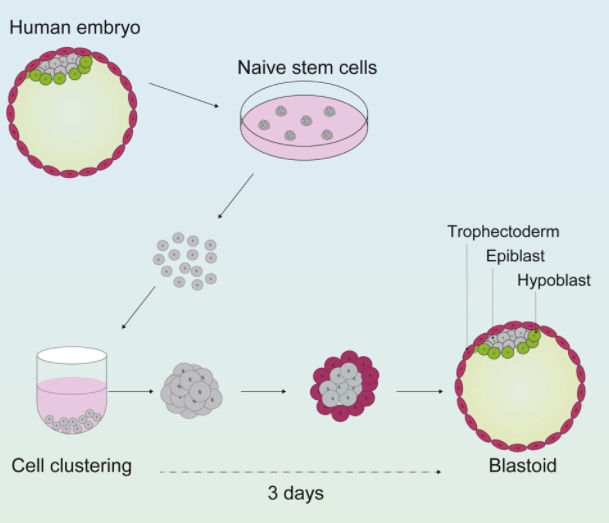Stem cell model can generate early embryonic structures
Stem cells are undifferentiated cells that have the ability to differentiate later into different types of cells. They then proliferate to produce more of the same stem cell. They are found in both embryonic and adult organisms, but they have different properties in each. As such, they provide an opportunity to study early embryonic development.
Scientists at the University of Exeter, UK have found an efficient way to recreate the early structure of the human embryo from stem cells in the laboratory setting. They investigated the potential of human naive stem cells to generate blastoids that showed high fidelity to the human embryo and which matched key criteria for an experimental model system.
Understanding embryonic development
This is important because the ability to create artificial early human embryos will improve our understanding of embryonic development, such as the conditions needed to avoid miscarriage and other problems. These model embryos can also be used to test conditions that may improve the embryo development processes in assisted reproductive technology techniques such as IVF.
In their study, the team arranged the stem cells into clusters and briefly introduced two molecules, which influence cell behaviour in early development. They found that, after three days, 80% of the clusters formed structures that resembled the blastocyst stage of an embryo. The team then demonstrated that the new artificial embryos had the same active genes as natural embryos.
Comparable to late human blastocyst
The team stated in Cell Stem Cell journal, “Overall, the localization of epiblast, hypoblast and trophectoderm markers indicates that the cysts attain a developmental stage comparable to the late human blastocyst (E6/7) in which the three founding embryo lineages are fully segregated. We therefore termed these cysts human blastoids.”
Creating all the elements of an early embryo is a revelation
Professor Austin Smith, Director, University of Exeter’s Living Systems Institute said, “Finding that stem cells can create all the elements of an early embryo is a revelation. The stem cells come from a fully formed blastocyst, yet they are able to recreate exactly the same whole embryo structure. This is quite remarkable and unlocks exciting possibilities for learning about the human embryo.”
Allows study of crucial implantation stage
The study was led by Dr Ge Guo, University of Exeter’s Living Systems Institute, who said that the next stage for the researchers is to understand how to develop the artificial embryos a few days further. This will allow them to study the critical period when an embryo would implant into the womb, which is when many embryos fail to develop properly.
He is upbeat about the team’s work and said, “Our new technique provides for the first time a reliable system to study early development in humans without using embryos. This shouldn’t be seen as a move towards producing babies in a laboratory, but rather as an important research tool that could benefit IVF and infertility studies.”
References
- A Yanagida, D Spindlow, J Nichols, A Dattani, A Smith, G Guo. 2021. Naive stem cell blastocyst model captures human embryo lineage segregation. Cell Stem Cell. 2021. DOI: https://doi.org/10.1016/j.stem.2021.04.031


